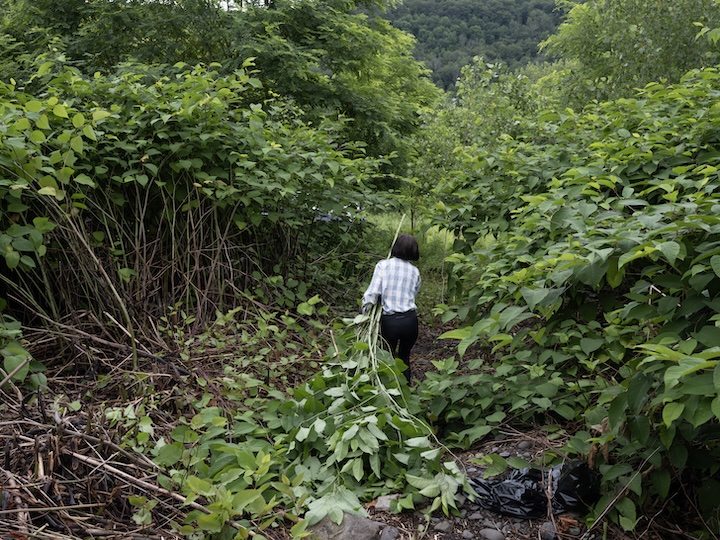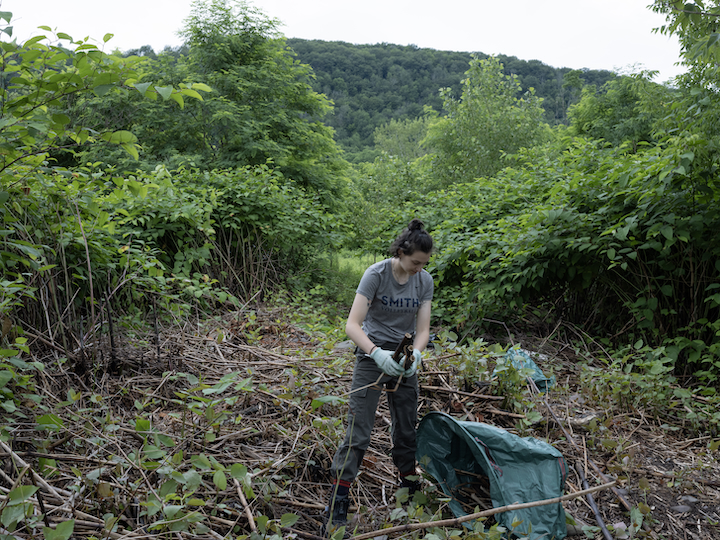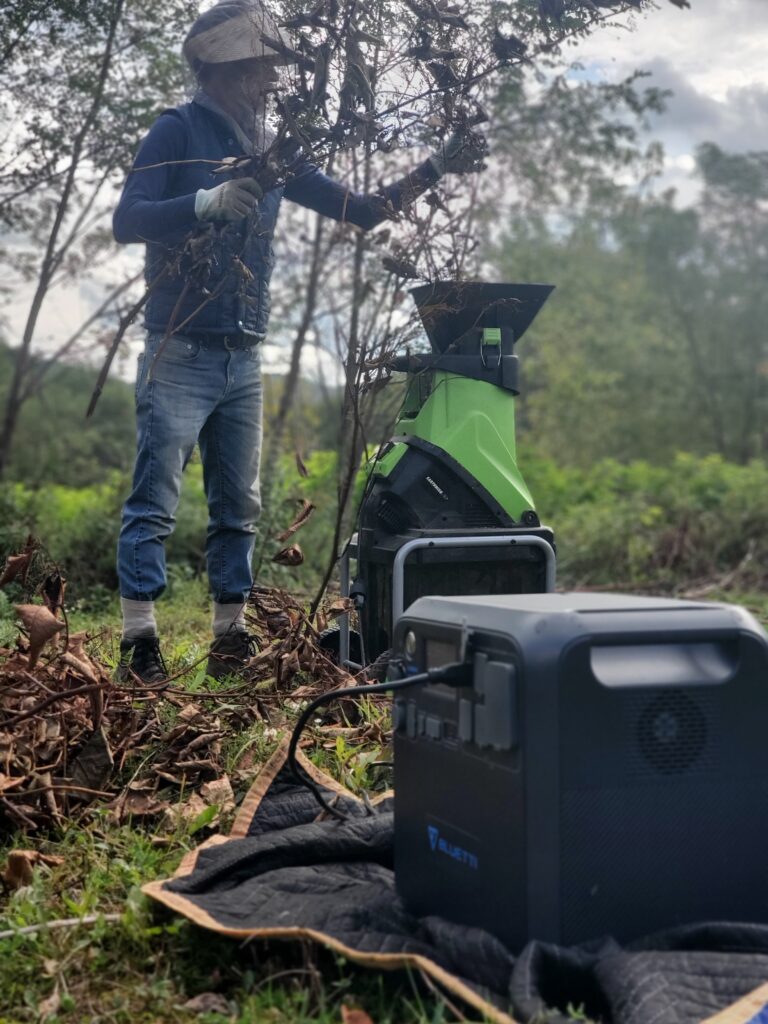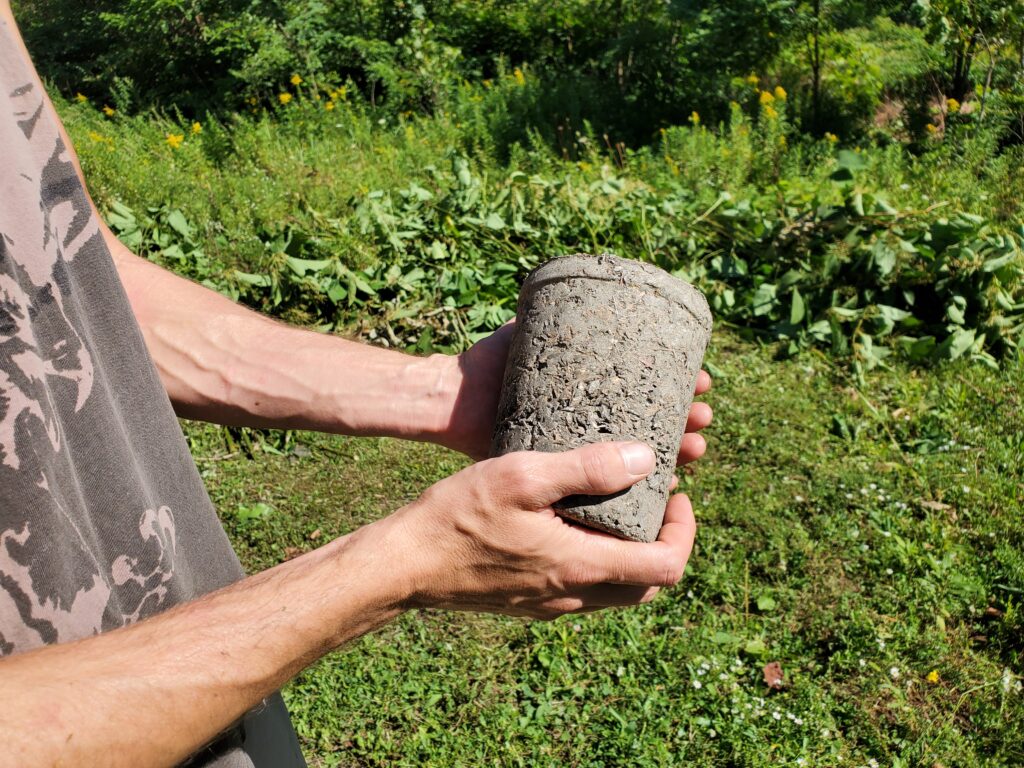
StreamBank
An ecological and biocultural restoration project removing knotweed and planting willow, while also learning about productive uses of both plants. There is an education component to this project as well, featuring multiple workshops.
What is it?
StreamBank is an ecological restoration project focused on removing knotweed and planting willow on a site along the Schoharie Creek in the Catskill Mountains, as well as an education project that gathers and shares knowledge about the cultural histories and potential uses of both knotweed and willow. Strict protocols are used in the removal of the knotweed and Toolshed and its partners carefully monitor the efficacy of various techniques used in order to contribute to the body of knowledge about best practices.
What does it do?
On the practical side we are removing knotweed from a popular fishing and swimming site along the Schoharie Creek in order to prevent knotweed from choking off human access, as well as crowding out other species of plants endemic to the riparian ecosystem. We are planting willow as a fast growing, native alternative. In the process we are experimenting with uses of knotweed in an effort to encourage others to control populations through productive use. Some of these uses have potential commercial applications that could scale up.
On the education or cultural side, we are learning about the history of willow use, particularly among the Mohican and Mohawk on whose ancestral lands that project is taking place and passing that knowledge on to others via workshops and our Ecotopian Collection in the Hudson Area Library. We are also holding workshops on the uses of knotweed, including papermaking and tinctures.
Who is it for?
Anyone who is concerned about controlling knotweed where they live, work or play. Anyone interested in the value of either willow or knotweed (as well as the problems of unchecked knotweed growth to ecosystems).
What inspired and informed the project?
Direct inspiration for the project came from seeing dense knotweed stands everywhere along Catskills and Hudson Valley streams, destabilizing streambanks and affecting biodiversity in such an obvious way. Also informing the project are Japanese and Mohican traditions, design prototypes and circular economy experiments in Europe and elsewhere, the ecocultural history of willow use among river communities, and current debates around “fortress conservation” and the role of people in land-based projects for climate mitigation and biodiversity.
Who worked on it?
This project was created by Timothy Furstnau, a Toolshed founder, but also a member of FICTILIS and the initiative they created, Catskills Community Restoration, to support StreamBank the project via stewards in residence and other programs.
Partners for Climate Action Hudson Valley provided funding for the initial ecological restoration work.
Berkshire Taconic Community Foundation provided some funding for the workshops; the People and Planet Fund and other individual contributors to Toolshed provided other funding for workshops and documentation.
Green County Soil and Water Conservation District, particularly Laura Weyeneth and Joel DuBois, has provided general advice, oversight, consulting on site selection and acted as fiscal sponsor.
Lucy Gringnon of the Stockbridge-Munsee Band of Mohican Indians taught a workshop on Mohican uses of willow and has been conducting research on willow in part through a grant from Toolshed.
The Prattsville Town Board grants us access to the town-owned land for the purposes of the restoration project and studies emerging from it.
What specific tools does it employ or create?
Removal of introduced species that minimizes chemicals (knotweed is difficult to impossible to control without some chemical application); species removal that encourages use of target species in order to control through productive use; biocultural remediation; citizen science; willow planting; workshops; instructional videos; volunteerism; circular economies.








